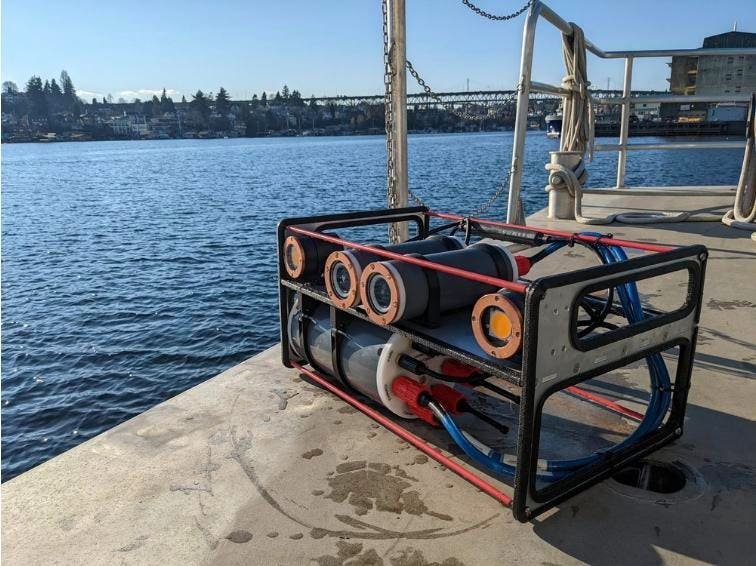[ad_1]

Camera hardware from MarineSitu
The World Bank says the Blue Economy relates to the sustainable use of ocean resources for economic growth. Tidal turbines are one example. But how do you make sure that generating renewable energy on the seas doesn’t do more aquatic harm than environmental good?
Plainsight, an artificial intelligence (AI) company in the United States, has partnered with MarineSitu, a hardware and software provider and spinoff from the University of Washington. The focus is on enabling marine energy devices to coexist harmoniously with aquatic life.
Elizabeth Spears of Plainsight
Plainsight calls the technology “vision AI” or “computer vision,” says Elizabeth Spears, company cofounder and chief product officer in Seattle, Washington. “The idea is that anything that people could see, we could train a model to see it.”
MarineSitu was one of a dozen research and development projects funded by the U.S. Department of Energy in 2021, receiving support to develop a camera system to monitor an operating turbine at the University of Washington.
The Plainsight-MarineSitu collaboration will involve using an underwater camera device for continuous monitoring and real-time data processing, starting with tidal turbines.
“We’re teaching it about fish, types of fish, later on sizes and what their optimal health looks like,” Spears says.
The technology result in better marine energy projects.
“It will mean that if I’m a fish, the chances of understanding what’s going to impact me and the chances of me being properly protected are much higher.”
Spears explains that when looking for a site for a tidal turbine or wave energy converter, you want to understand the ecosystem and any potential negative impacts. What’s the population of fish and other aquatic life? Are there endangered species that frequent the area? And if you decide on a site, you need to monitor the impacts once the turbine is turning.
An example of Plainsight’s computer vision solutions for fish population detection, classification … [+]
According to the U.S. Energy Administration, there are several demonstration tidal energy projects in the country, including in New York and Maine. Environmental impacts are a key consideration when it comes to siting.
And more siting work by Plainsight, MarineSitu and competitors seems likely with a 2021 goal set by the National Hydropower Association: 1 gigawatt of marine energy deployments by 2035. The goal was announced following a 2021 federal report that said the total marine energy technical resource in the 50 states is equivalent to 57% of the electricity generated by those states in 2019.
Monitoring on Dry Land
The so-called Blue Economy isn’t the only use for this monitoring tech, Spears says. You can point a camera at any place where visual indicators would be useful. That includes monitoring the health of fish in aquaculture, looking for algal blooms, invasive species, etc.
Plainsight is working “with one of the world’s leading agricultural companies” to understand pest populations and plant disease spread, Spears says.
“The way this typically works is, researchers will go out into fields and take pictures of leaves with small pests on them. There can be hundreds on a single leaf. They go back to lab and classify each single one.” That’s tedious, time-consuming and error-prone work.
Plainsight has built a model that counts and classifies the pests for the researchers.
The benefit is the same as with marine energy monitoring: allowing for continuous monitoring rather than limited recording of environments and manual data analysis.
[ad_2]
Source link
